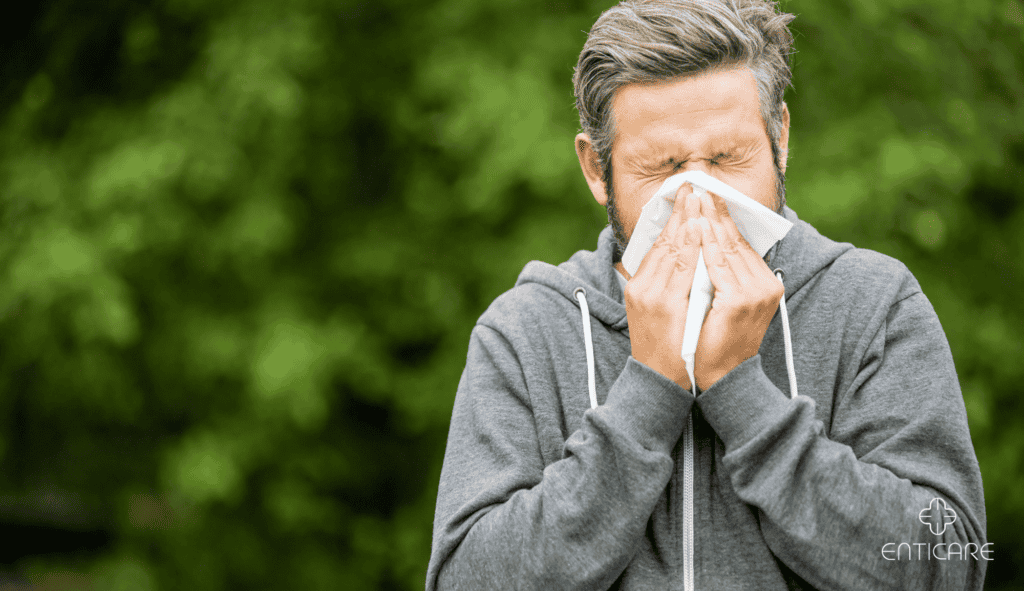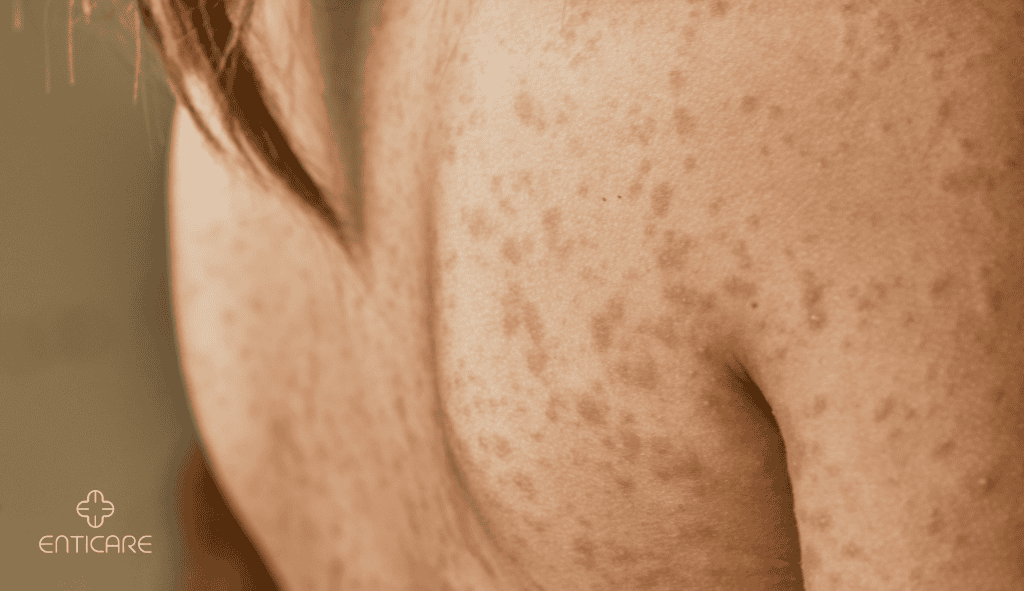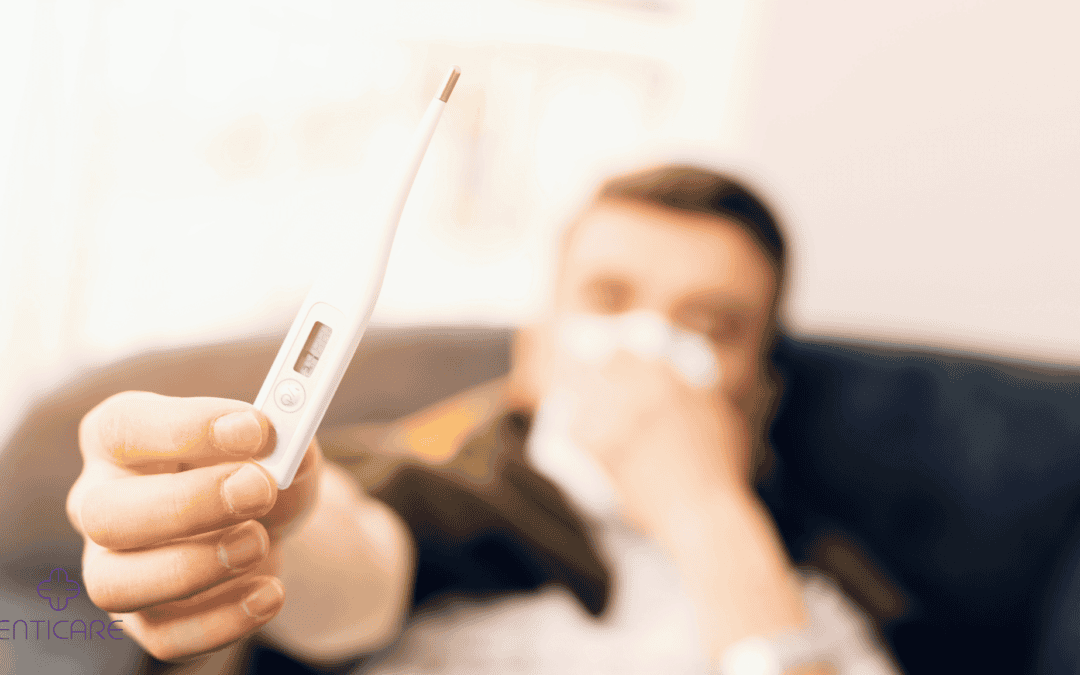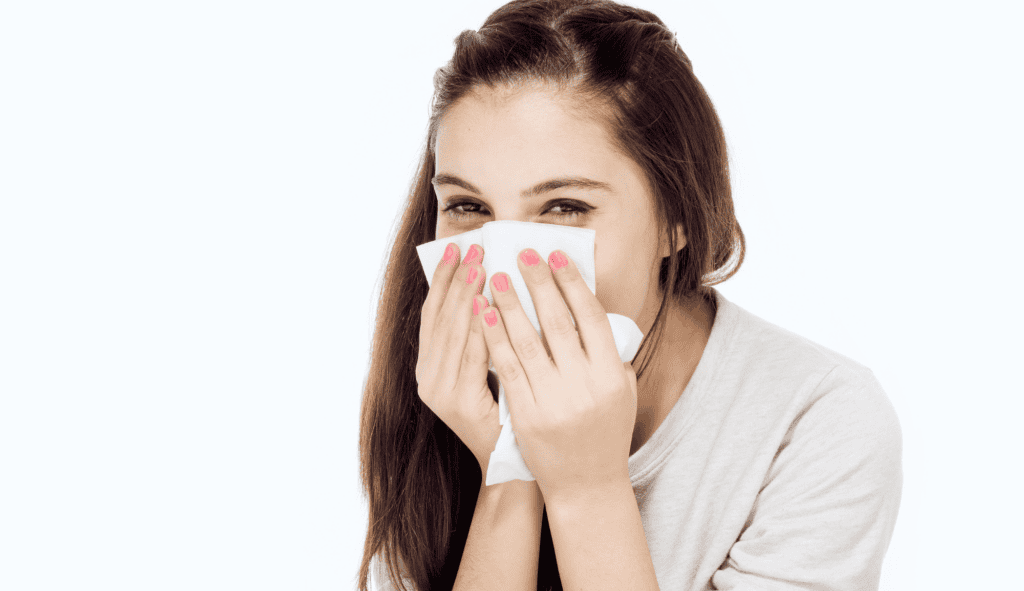For those with seasonal allergies, hay fever symptoms often include sneezing, itchy eyes, congestion, and rashes, which can sometimes be a form of allergic dermatitis. But a lesser-known symptom, hay fever rash, adds discomfort with its unique itching, redness, and inflammation. Let’s explore what this rash looks like, why it happens, and how to manage it.

Understanding Hay Fever and Its Symptoms
Many know hay fever is seasonal, but it involves much more than sneezing. Hay fever is a type of nasal allergy that can cause various symptoms beyond just sneezing. Allergic conjunctivitis, characterized by itchy, red, and watery eyes, is a common symptom. Understanding the broader impact helps you identify symptoms that may not initially seem allergy-related.
Allergic Rhinitis Basics
-
- What Triggers It: Hay fever, also known as pollen allergy, arises from allergic reactions to airborne particles like pollen, dust, and mold.
- Why It’s So Common: These airborne allergens are difficult to avoid, especially during peak pollen seasons.
- Symptoms Beyond Sneezing: While respiratory symptoms dominate, many people also experience skin reactions, including rashes.
- Nasal Allergy Symptoms: These include a runny nose, nasal congestion, and sneezing, which are common in hay fever sufferers.
Understanding Allergic Rhinitis
Allergic rhinitis, commonly known as hay fever, affects millions worldwide. This condition is an allergic reaction to airborne particles such as pollen, dust, and pet dander. When these particles enter the body, they release histamine and other chemicals, leading to various symptoms. Allergic asthma, which can cause wheezing, shortness of breath, and chest tightness, may also accompany hay fever. These symptoms often include a runny nose, itchy eyes, sneezing, and nasal congestion. Understanding allergic rhinitis is crucial for managing these symptoms effectively and improving your quality of life.
Why Hay Fever Causes Skin Issues
Hay fever triggers the immune system to overreact, leading to inflammation in the nose, eyes, and skin. Contact dermatitis, characterized by red, itchy, and inflamed skin, can also occur when the skin comes into direct contact with allergens. This reaction can make the skin feel sensitive and itchy.
However, it is essential to note that hay fever should not be confused with infectious rhinitis, which is typically caused by the common cold and has different underlying mechanisms.
What Does Hay Fever Rash Look Like?
Urticaria, or hay fever rashes, often resemble other skin conditions but have distinct features that can help you identify them.
Appearance of Hay Fever Rash
-
- Red, Itchy Patches: Hay fever rashes tend to appear as red patches that may resemble hives.
- Slightly Raised Bumps: The rash can include raised, itchy bumps that may feel rough.
- Localized or Widespread: The rash often appears on areas exposed to pollen, like the face, neck, and arms, but it may also spread.
Common Areas Affected
Hay fever rashes generally occur on areas where allergens like pollen contact the skin, particularly the face, neck, arms, and legs. Atopic dermatitis, characterized by red, itchy, and inflamed skin, can also manifest in these areas.
Rash Duration and Recurrence
Hay fever rashes might appear quickly after allergen exposure, lasting several hours to days, depending on exposure levels and your immune response.
Chronic urticaria, characterized by persistent hives and itching, can last for six weeks or more.
Causes and Triggers of Hay Fever Rash
Allergen exposure, though less common, can be a particularly distressing symptom of allergic rhinitis. The causes and triggers of hay fever rash are similar to those of allergic rhinitis. Common culprits include pollen from trees, grasses, weeds, dust mites, and pet dander. Mold and fungi, along with certain foods and substances, can also trigger this rash. Recognizing these triggers can help you take steps to avoid them and manage your symptoms more effectively.
Identifying Hay Fever Rash vs. Other Skin Conditions
Differences Between Hay Fever Rash and Eczema
-
- Location: Eczema usually appears in folds of the skin, like elbows or knees, while hay fever rash appears on exposed areas.
- Appearance: Eczema patches are typically dry and flaky, whereas hay fever rashes often look redder and more inflamed.
- Triggers: Eczema results from internal triggers like stress or diet, while hay fever rashes occur due to environmental allergens.
Hay Fever Rash vs. Heat Rash
-
- Causes: Heat rash, also known as prickly heat, happens due to blocked sweat glands in hot conditions, while hay fever rash results from an allergic response.
- Appearance: Heat rash appears as tiny red or clear bumps, while hay fever rash tends to be larger patches or hives.
- Resolution: Heat rash resolves when you cool down, but hay fever rash persists as long as allergens remain present.
Similarities to Hives (Urticaria)
Hay fever rashes can resemble hives, as both may involve red, raised areas. Acute urticaria, a type of hives, typically presents with sudden onset of red, itchy welts that can last for a few hours to several days. However, hay fever rashes usually appear alongside respiratory symptoms, while hives might result from various causes, including food or medication.
How to Treat and Prevent Hay Fever Rash
Managing hay fever rashes involves using topical corticosteroids to address the rash and its underlying cause: allergies. Here’s how to do it effectively. Treating nasal allergies effectively can also help reduce the occurrence of hay fever rashes.
Over-the-Counter Treatments
-
- Antihistamines: Oral antihistamines reduce histamine levels in the body, targeting both respiratory and skin-related allergy symptoms.
- Anti-Itch Creams: Hydrocortisone or calamine lotions can soothe itchy patches and reduce redness.
- Moisturizers: Moisturizing can help prevent further irritation, particularly if your skin tends to dry out after a rash.
Preventive Skincare Routine
-
- Gentle Cleansing: Use hypoallergenic, fragrance-free cleansers to wash away allergens from your skin.
- Barrier Creams: Barrier creams can protect exposed skin from allergens, particularly during pollen-heavy months.
- Sunscreen, Moisturizer, and Emollients: Moisturized, protected skin may be less reactive to allergens. Emollients can help maintain skin hydration and barrier function.

When to See a Specialist for Hay Fever Rash
In some cases, home care won’t fully relieve hay fever rashes. Knowing when to see an allergy specialist ensures proper care and treatment.
Severe or Recurring Rashes
Suppose rashes appear every allergy season or are very painful. In that case, an allergy specialist can offer targeted solutions, including prescription antihistamines or steroid treatments.
Skin Infections
Severe scratching or ongoing rashes may lead to skin infections, which can cause further redness, pain, or oozing. Seek professional care to prevent complications, as they may recommend topical antibiotics.
Exploring Long-Term Allergy Treatments
If you suffer from recurring hay fever, immunotherapy or allergy shots may help. These treatments gradually reduce allergic reactions, targeting the root cause rather than just the symptoms. Another option to consider is sublingual immunotherapy, which offers a convenient and effective long-term solution for managing allergies.
Schedule an Appointment Today
Do you experience recurring rashes each allergy season? Understanding and treating hay fever rash can bring relief. Schedule an allergy consultation with Enticare’s allergy specialists to explore treatment options and manage your symptoms effectively.


